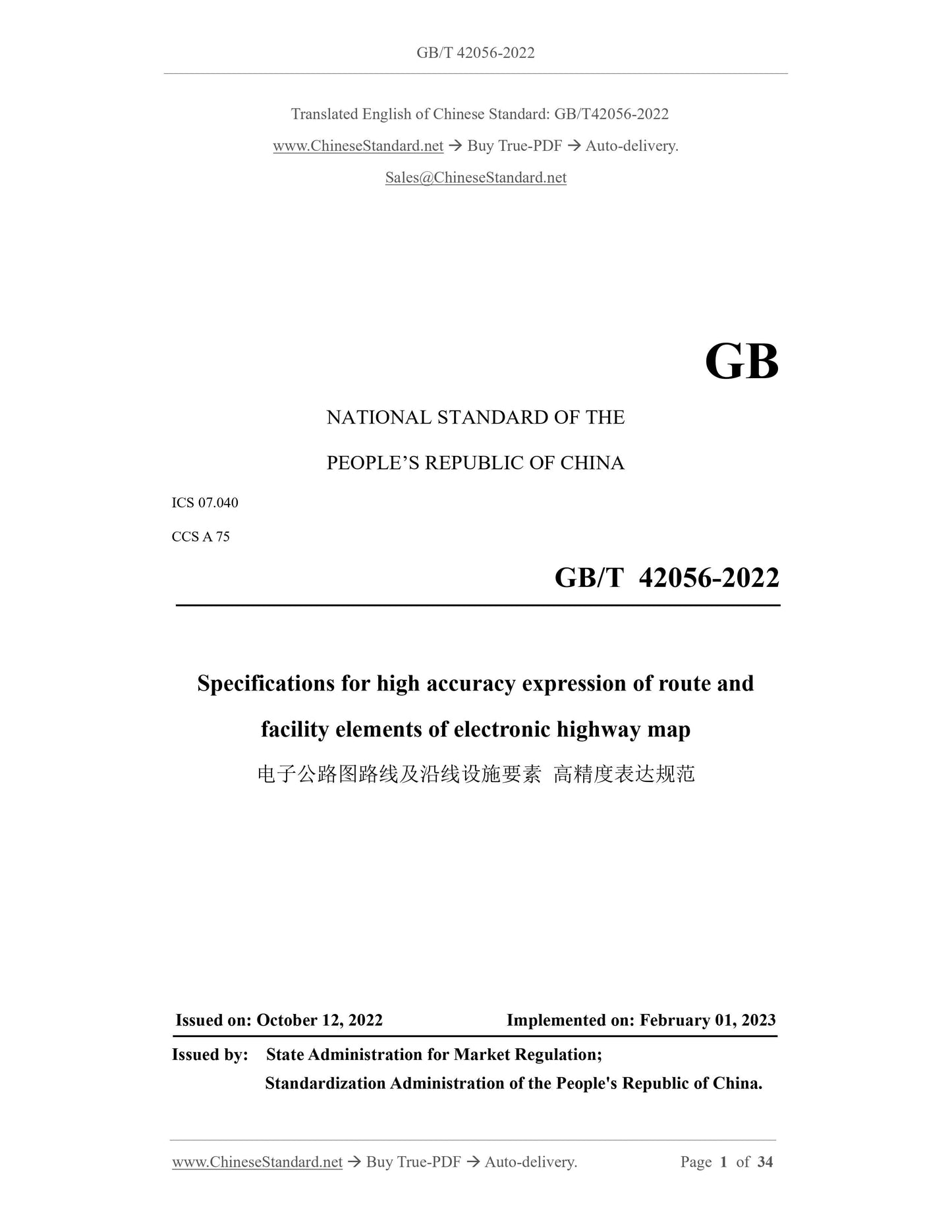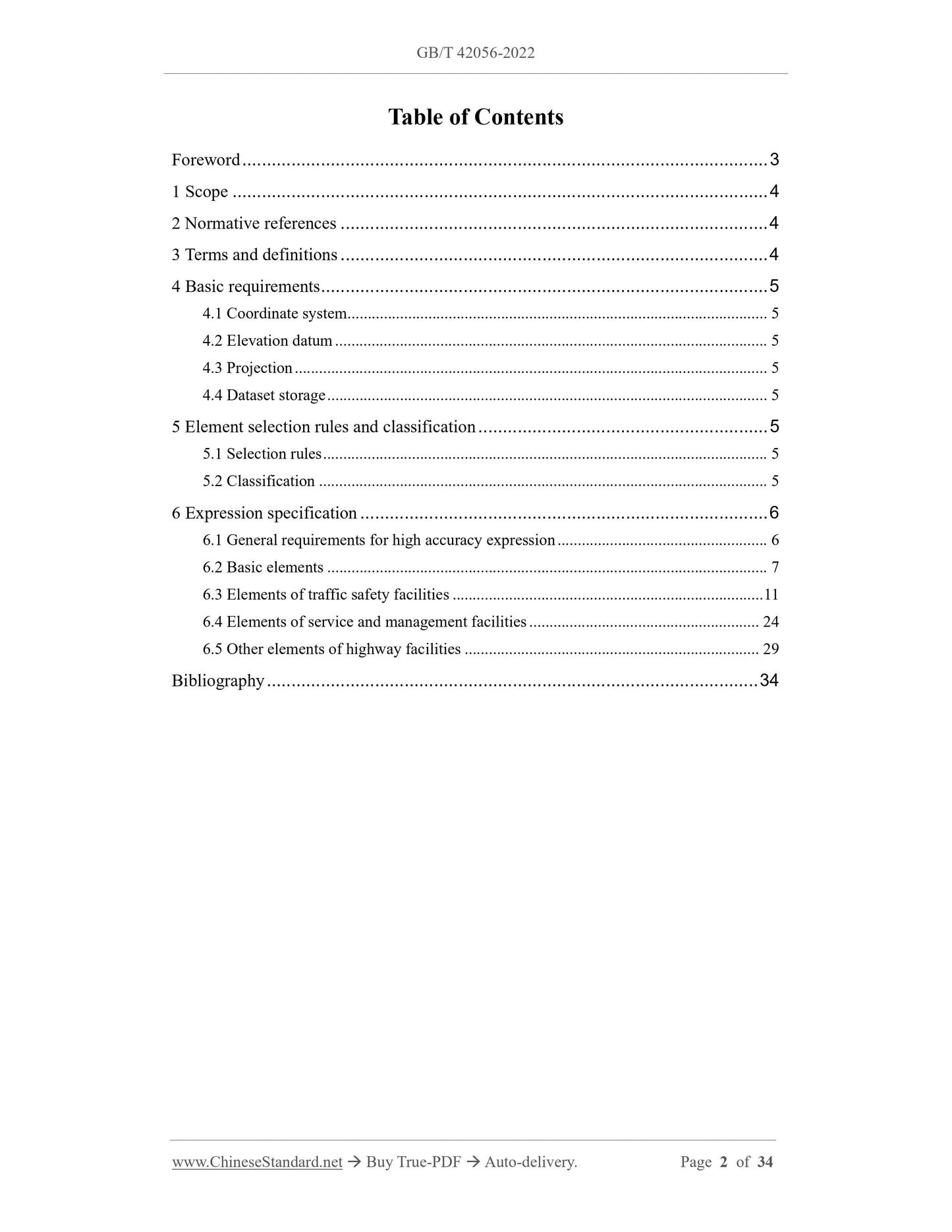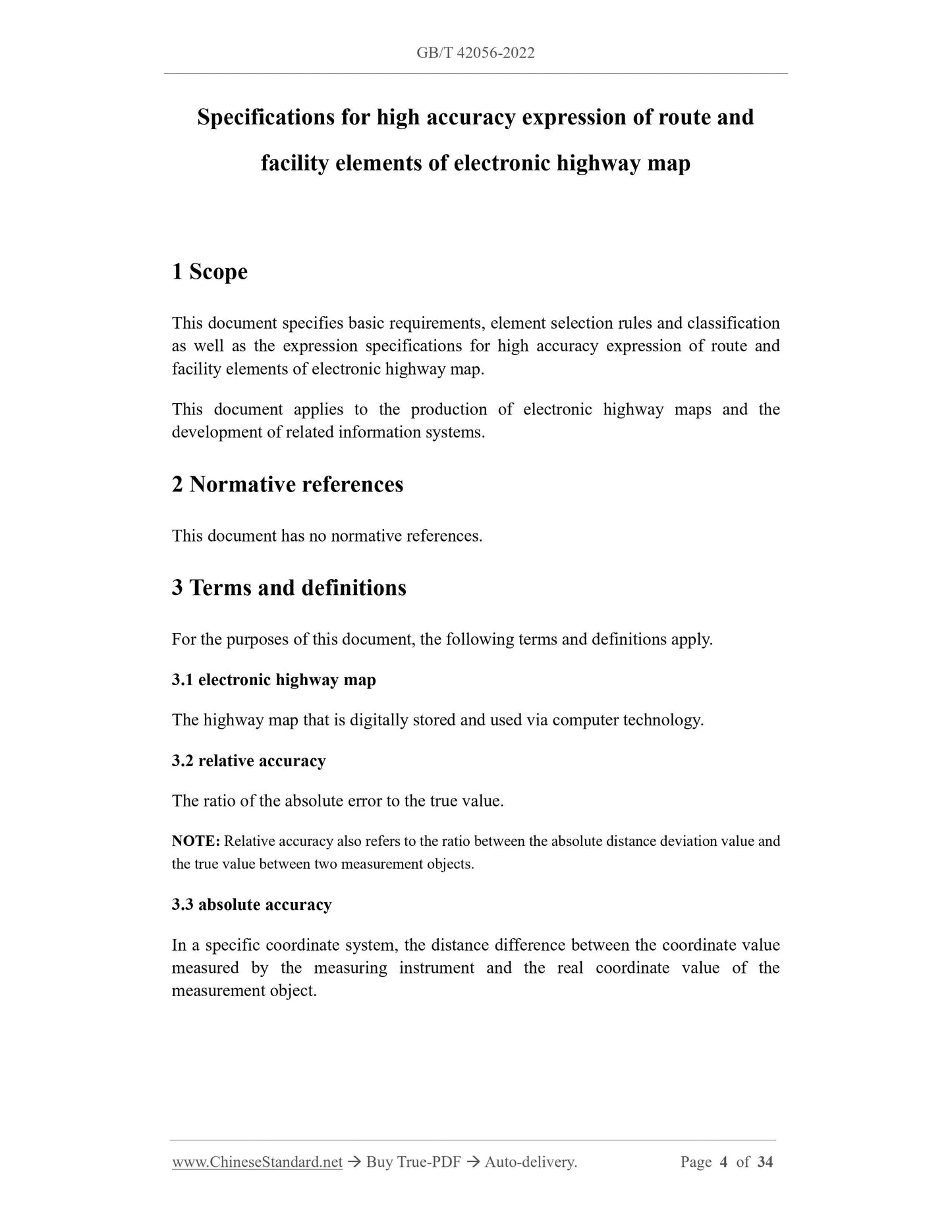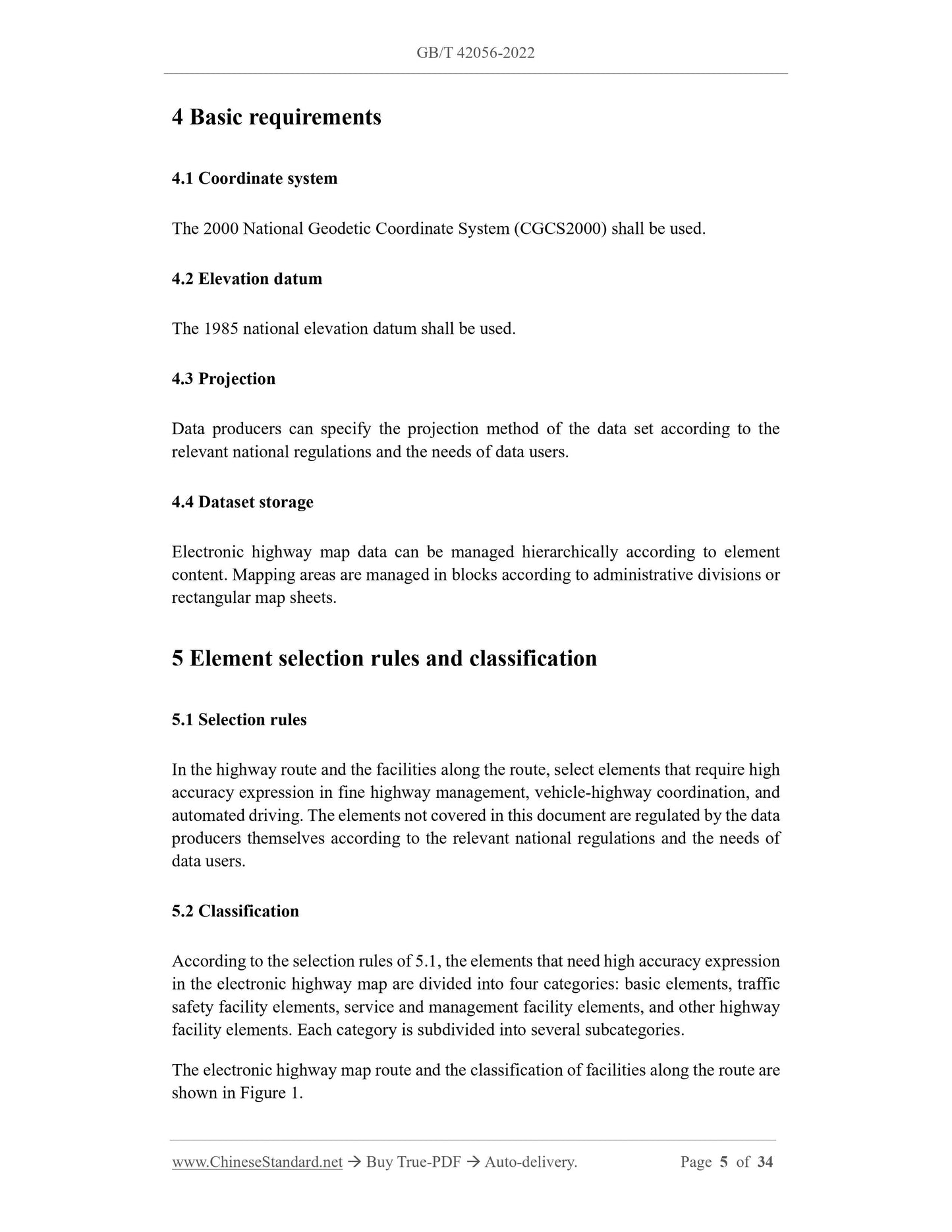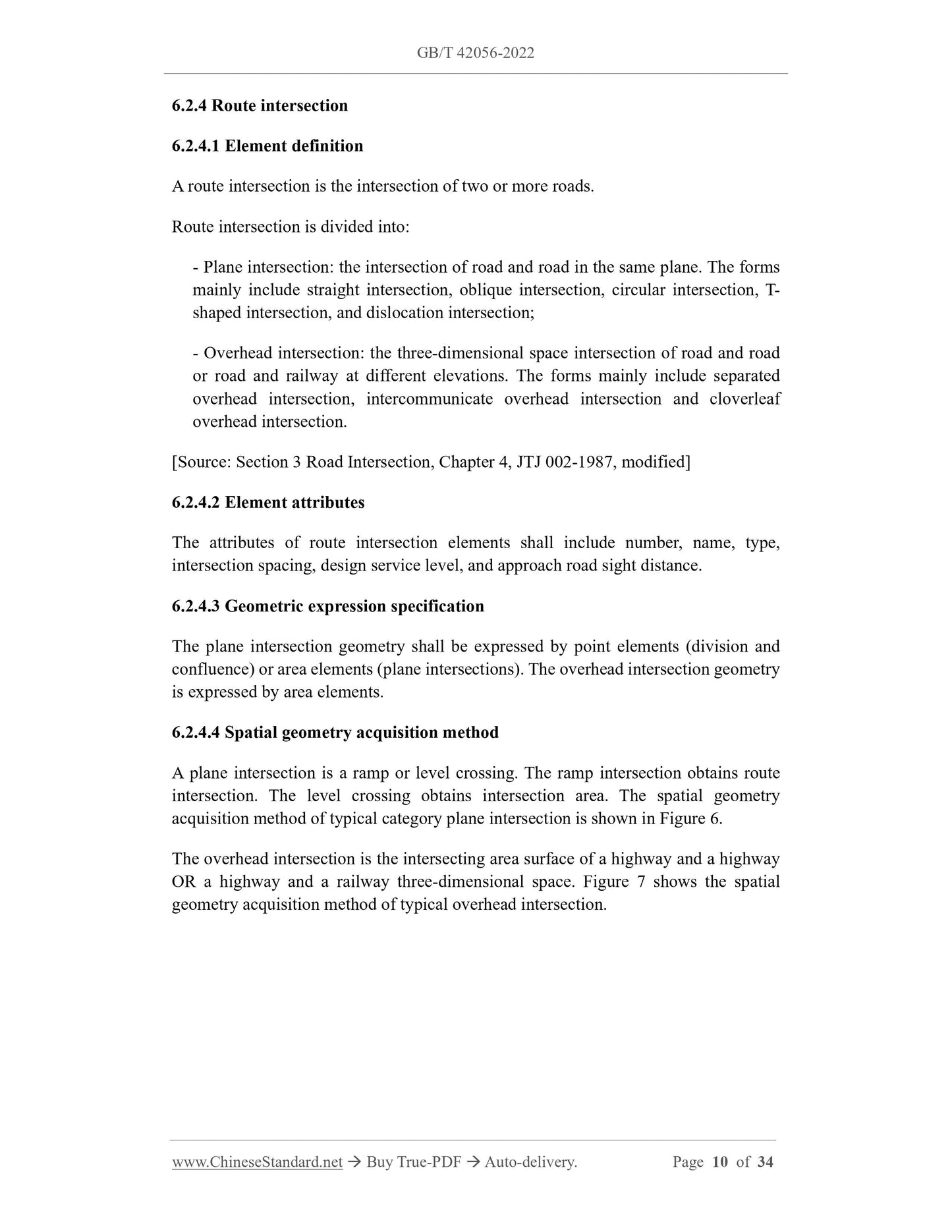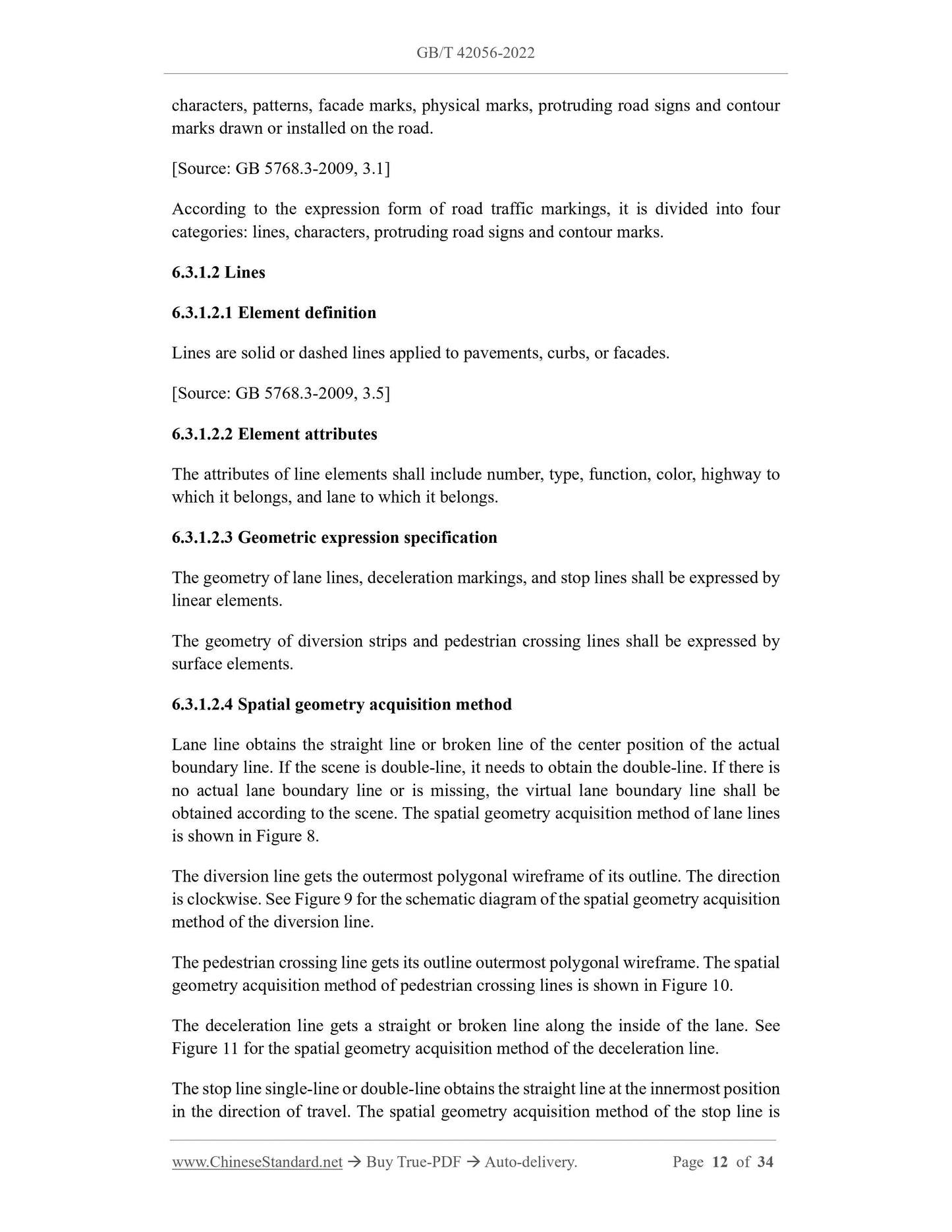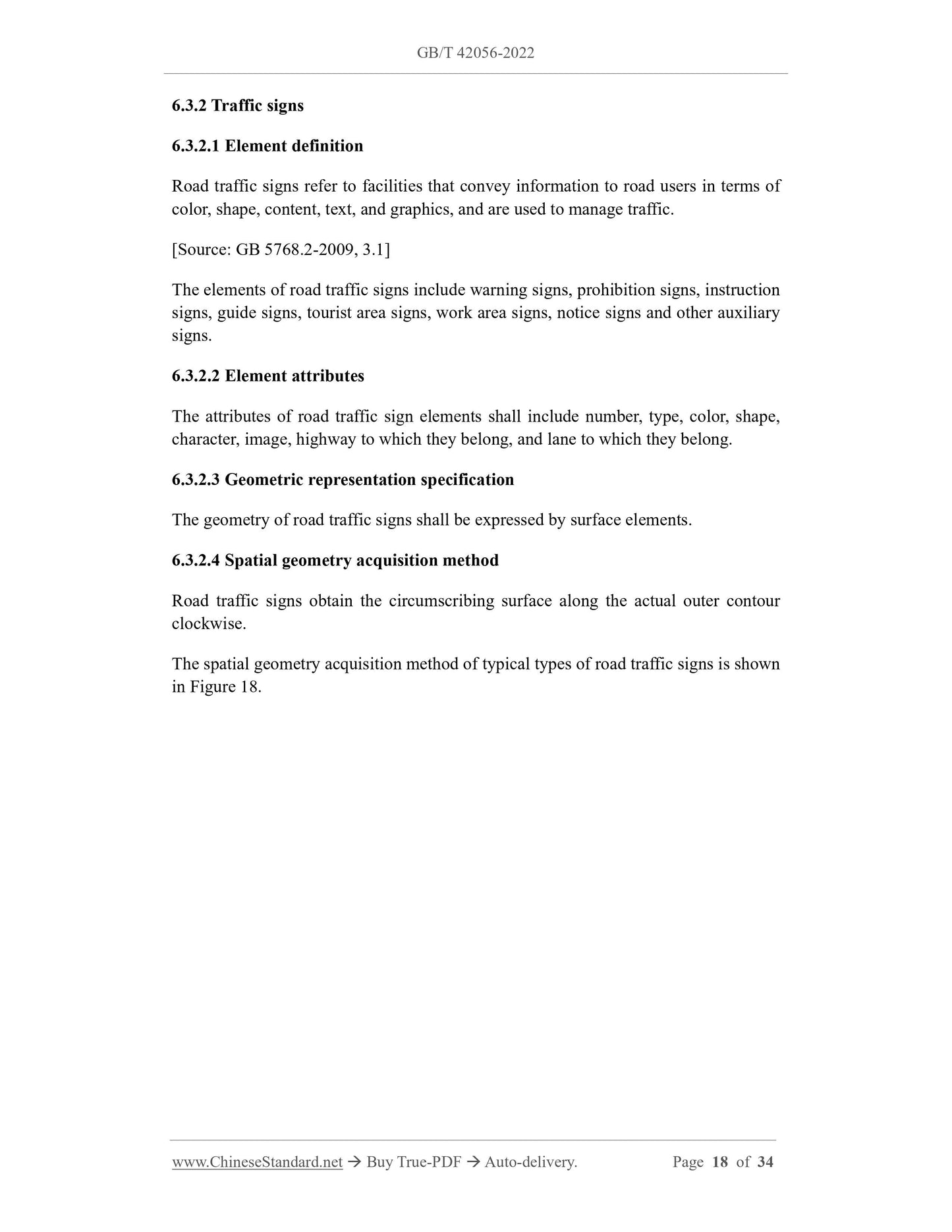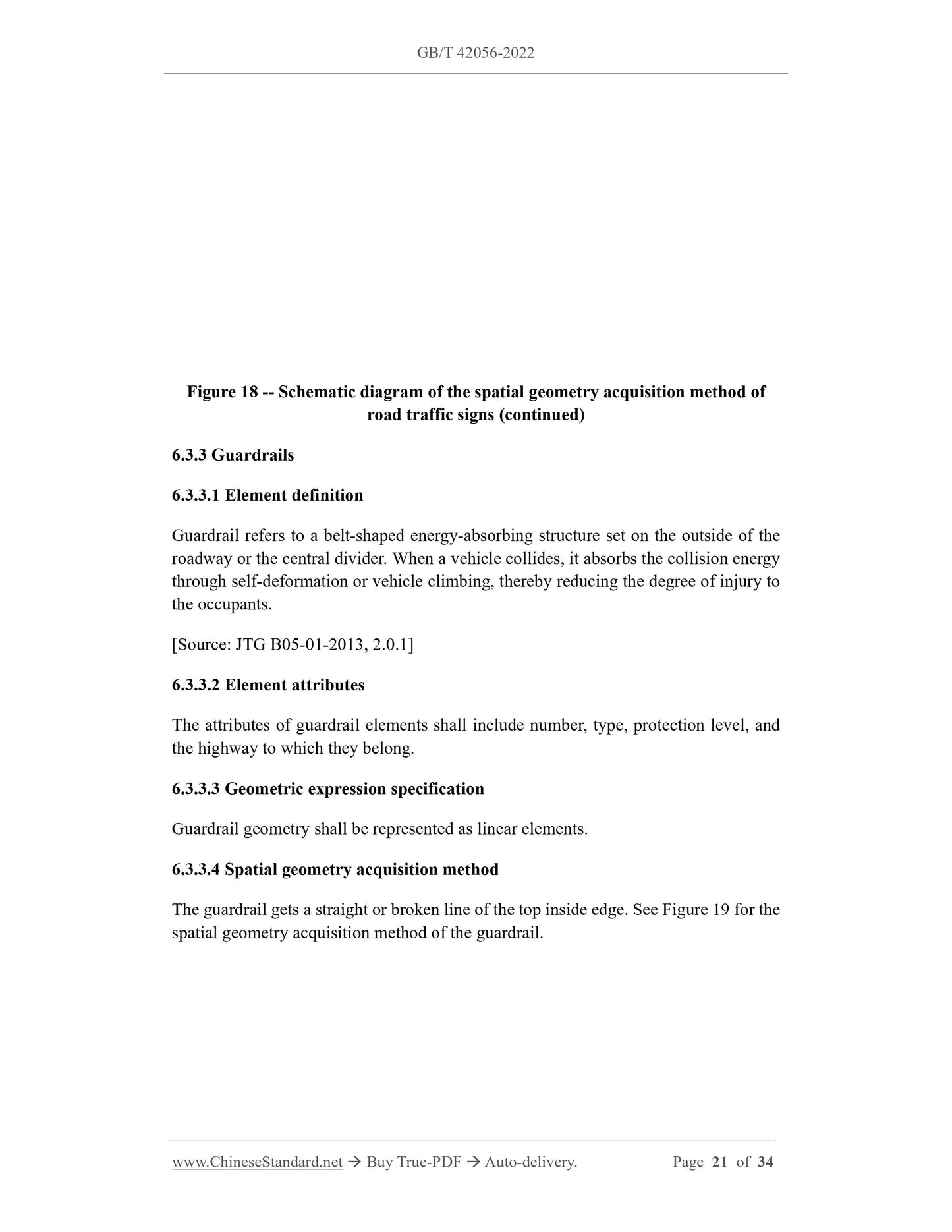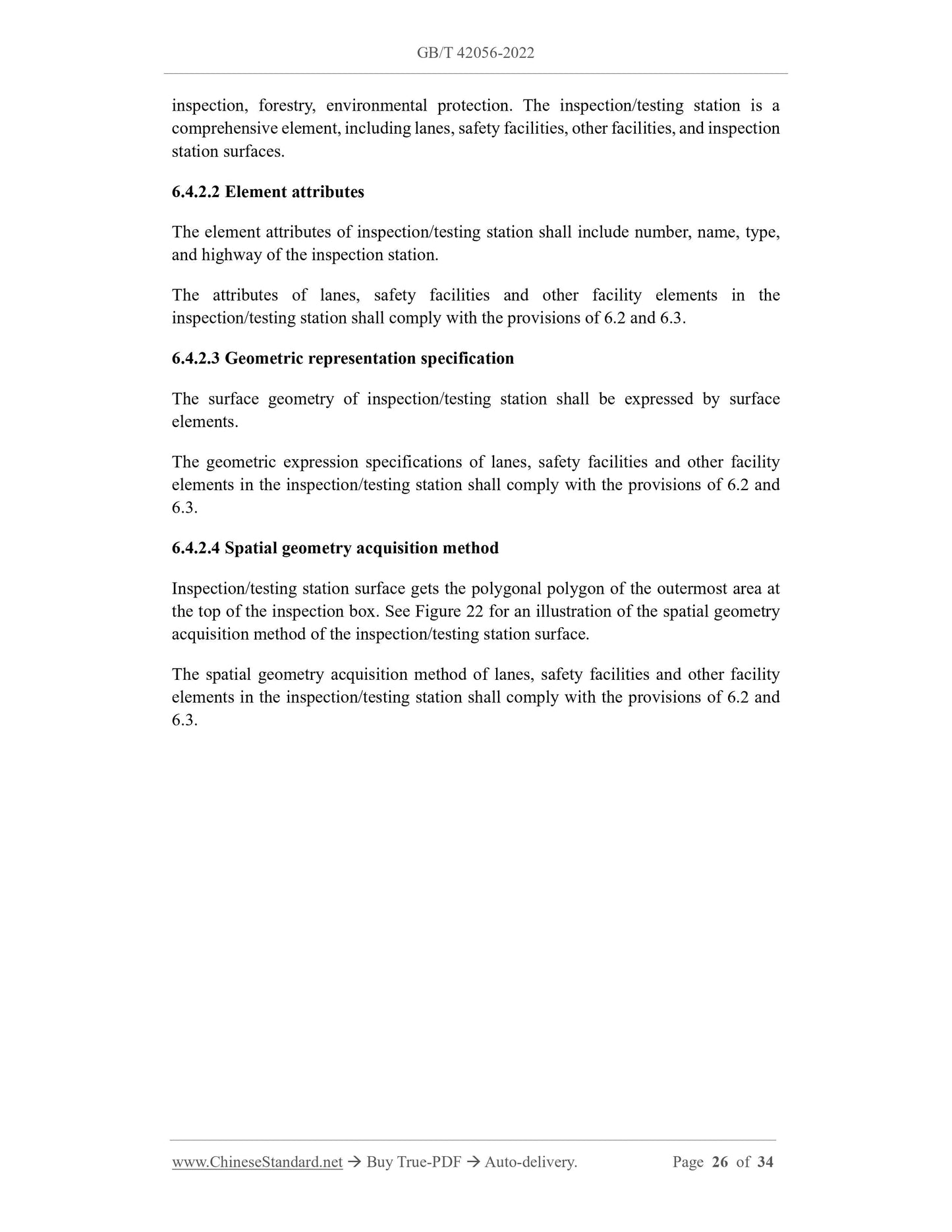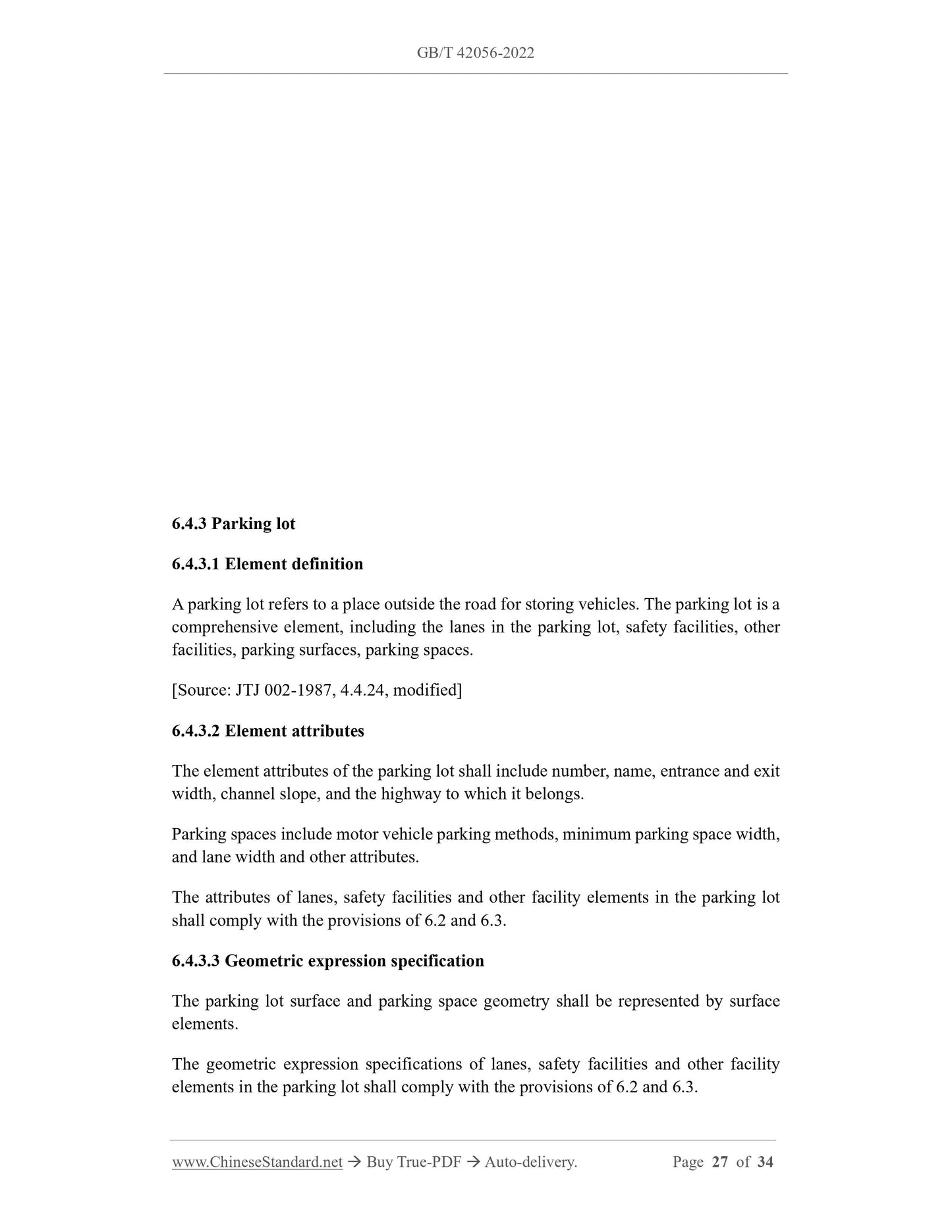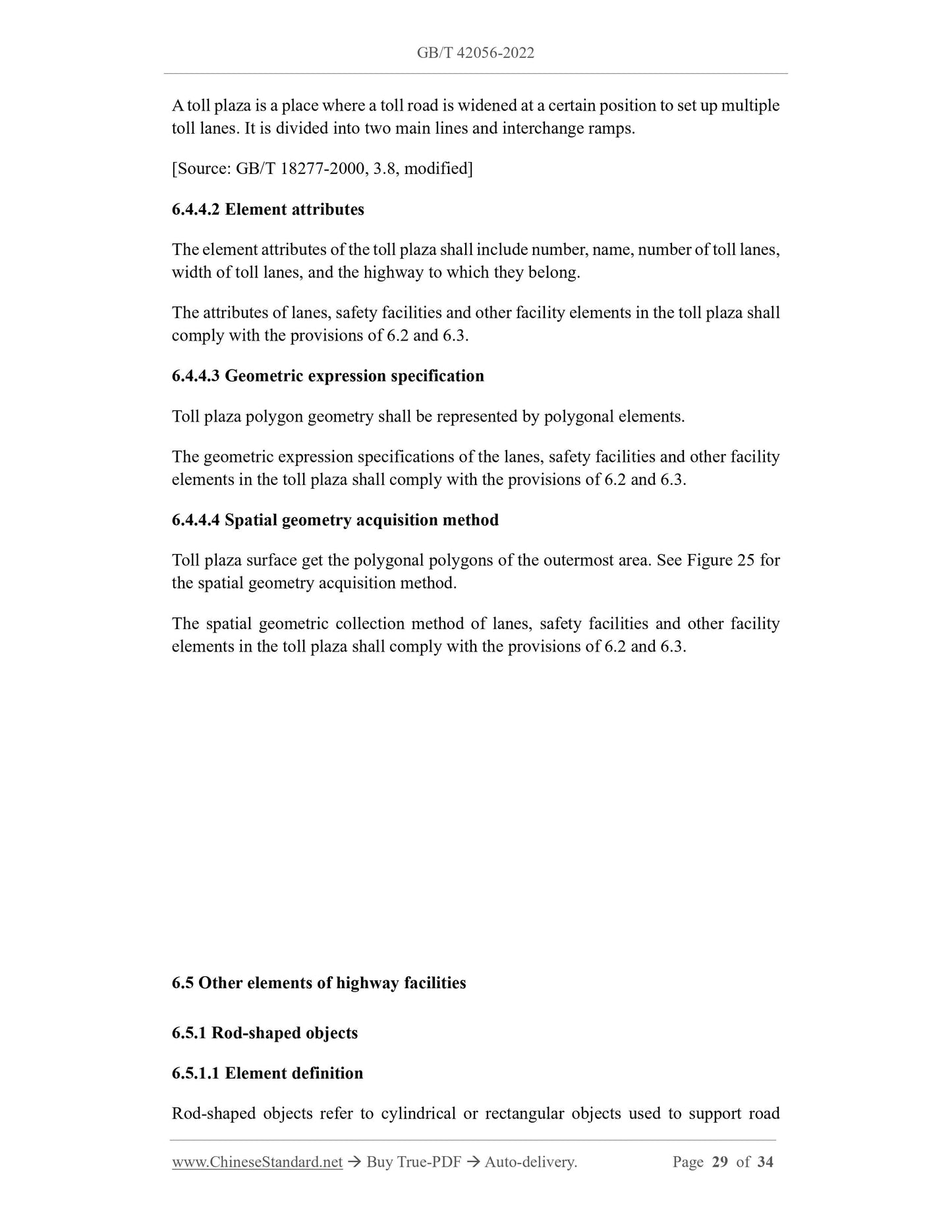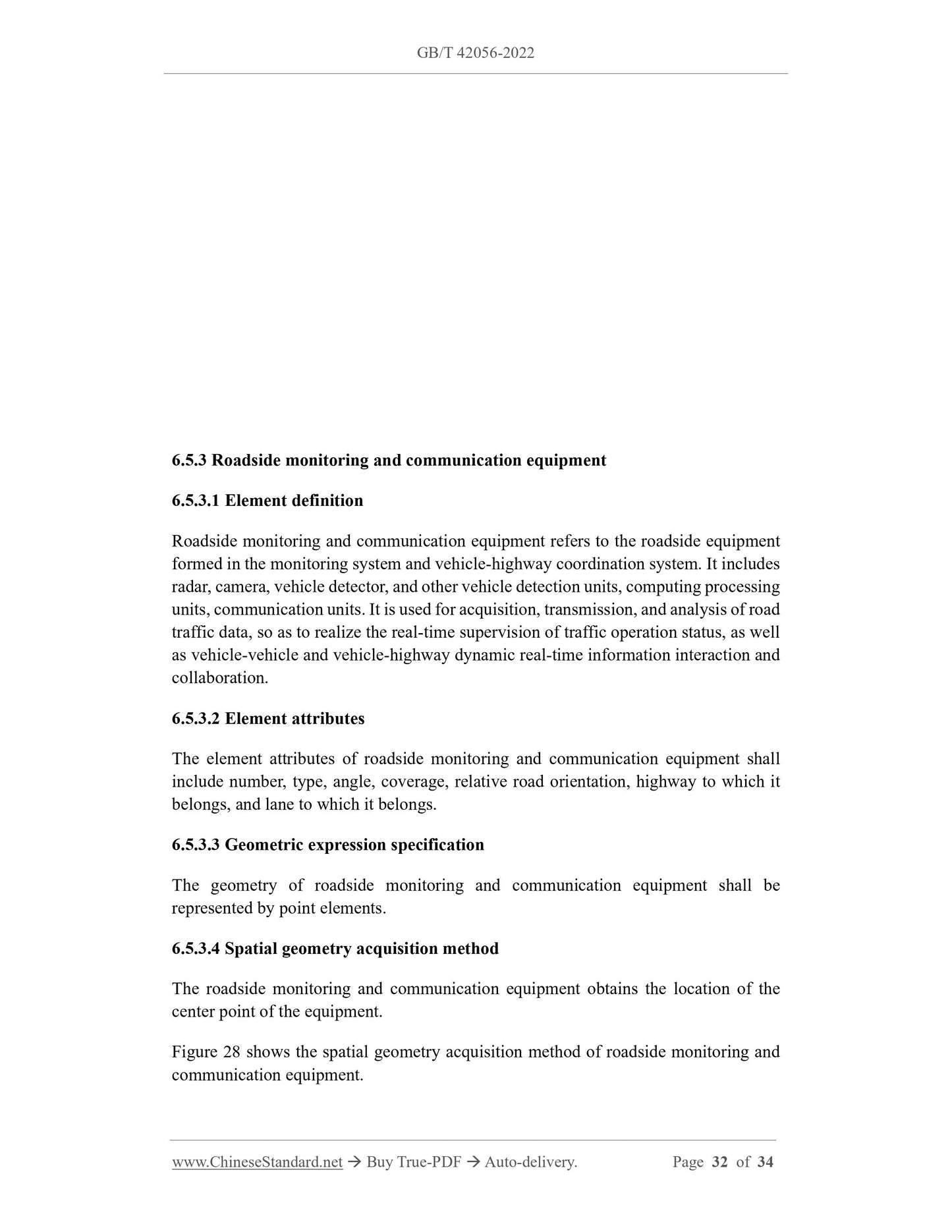1
/
of
12
www.ChineseStandard.us -- Field Test Asia Pte. Ltd.
GB/T 42056-2022 English PDF (GB/T42056-2022)
GB/T 42056-2022 English PDF (GB/T42056-2022)
Regular price
$305.00
Regular price
Sale price
$305.00
Unit price
/
per
Shipping calculated at checkout.
Couldn't load pickup availability
GB/T 42056-2022: Specifications for high accuracy expression of route and facility elements of electronic highway map
Delivery: 9 seconds. Download (and Email) true-PDF + Invoice.Get Quotation: Click GB/T 42056-2022 (Self-service in 1-minute)
Newer / historical versions: GB/T 42056-2022
Preview True-PDF
Scope
This document specifies basic requirements, element selection rules and classificationas well as the expression specifications for high accuracy expression of route and
facility elements of electronic highway map.
This document applies to the production of electronic highway maps and the
development of related information systems.
Basic Data
| Standard ID | GB/T 42056-2022 (GB/T42056-2022) |
| Description (Translated English) | Specifications for high accuracy expression of route and facility elements of electronic highway map |
| Sector / Industry | National Standard (Recommended) |
| Classification of Chinese Standard | A75 |
| Classification of International Standard | 07.040 |
| Word Count Estimation | 26,287 |
| Date of Issue | 2022-10-14 |
| Date of Implementation | 2023-02-01 |
| Issuing agency(ies) | State Administration for Market Regulation, China National Standardization Administration |
Share
